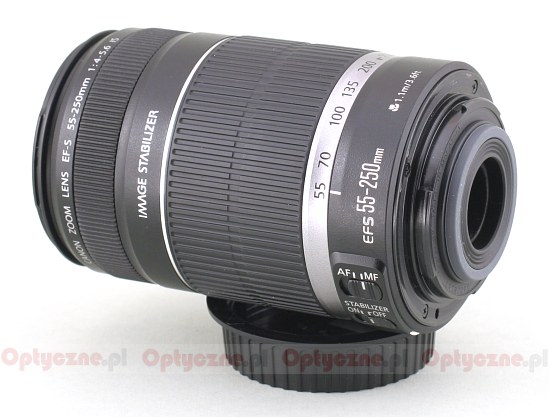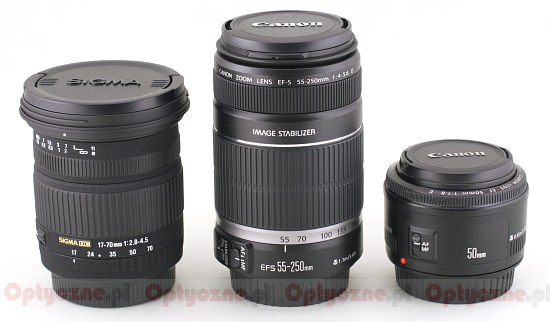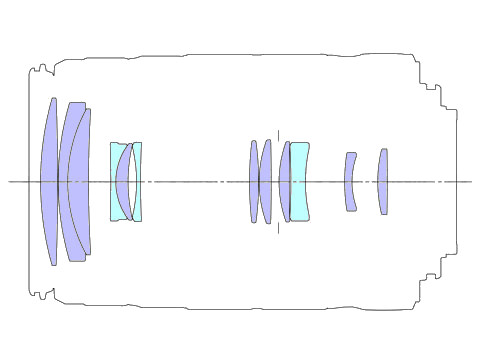Canon EF-S 55-250 mm f/4-5.6 IS
3. Build quality and image stabilization
 |
The large focal length adjustment ring on the lens body is clearly visible, comfortable and functions smoothly. What is most important is that when it moves, we feel the entire system of lenses, together with the tube it comes in, move fairly stably. Still, the shortcuts in savings are visible. You can see them in the manual focus ring. It is much narrower than the focal length adjustment ring and it’s much looser and causes rotating the front lens system. This will cause problems when using some kind of filters.
Additionally, the manual focus ring lacks any scale of focus.
Please Support UsIf you enjoy our reviews and articles, and you want us to continue our work please, support our website by donating through PayPal. The funds are going to be used for paying our editorial team, renting servers, and equipping our testing studio; only that way we will be able to continue providing you interesting content for free. |
- - - - - - - - - - - - - - - - - - - - - - - - - - - - - - - - - - - - - - - - - - - - - - - -
 |
Between the ring for changing the focal length and the bayonet you will find a switch for choosing the focus type mechanism (AF/MF) and a switch for optional lens stabilization.
Inside the lens are 12 lenses arranged in 10 groups. It’s noteworthy that one of the front lenses is made from low-dispersion UD glass, which should help with problems such as chromatic and spherical aberration. Additionally, we have a 7-blade diaphragm, which, depending on focal length, we can to shut down to f/22-32. The lens is also equipped with rotating filter mounting with a 58 mm diameter.

Unfortunately, we do not have good news for those counting on any additional equipment. The buyer gets only lens caps.
Stabilization
Comparing the prices of similar lenses equipped with stabilization and without shows that in the case of the Canon we have to pay an additional 300-650 USD for stabilization in the lens. Take a look at the EF 70-200 f/2.8L models, where the two lenses are considered to be optically comparable, and the only differences are IS and price.
So, how should we interpret the Canon offer, which says that the EF-S 55-250 IS gives us stabilization at 4 EV, which is an equally good result as the most expensive and famous L-series, and this time at a price of less than 300USD for the whole set? Let's try to verify this by looking at the figure below, which shows us test samples obtained at a focal length of 100mm and two scenarios with stabilization off and stabilization on.

You can clearly see that we obtain similar results at 1/100 seconds without stabilization and at 1/15 seconds with stabilization. This means there’s a good possibility of extending the exposure time to 6.5-7 times, which means a good level of stabilization performance at 2.7EV. It's still quite far from the advertised 4EV, especially when other manufacturers of the low-cost DSLRs, like Sony, Pentax or Olympus, can offer stabilization at 2-3EV.
The advantage of lens stability should be greater. In actual fact, it is, but only in the most expensive lenses, where their high price justifies the use of such elements, which deliver good stabilization performance up to 4EV. In the case of low-cost class lenses like the EF-S 55-250 IS tested here, where the manufacturer tried to save money everywhere just to deliver a lens for novice users, it is almost impossible to obtain stabilization as effective as the most expensive L-series lenses.






